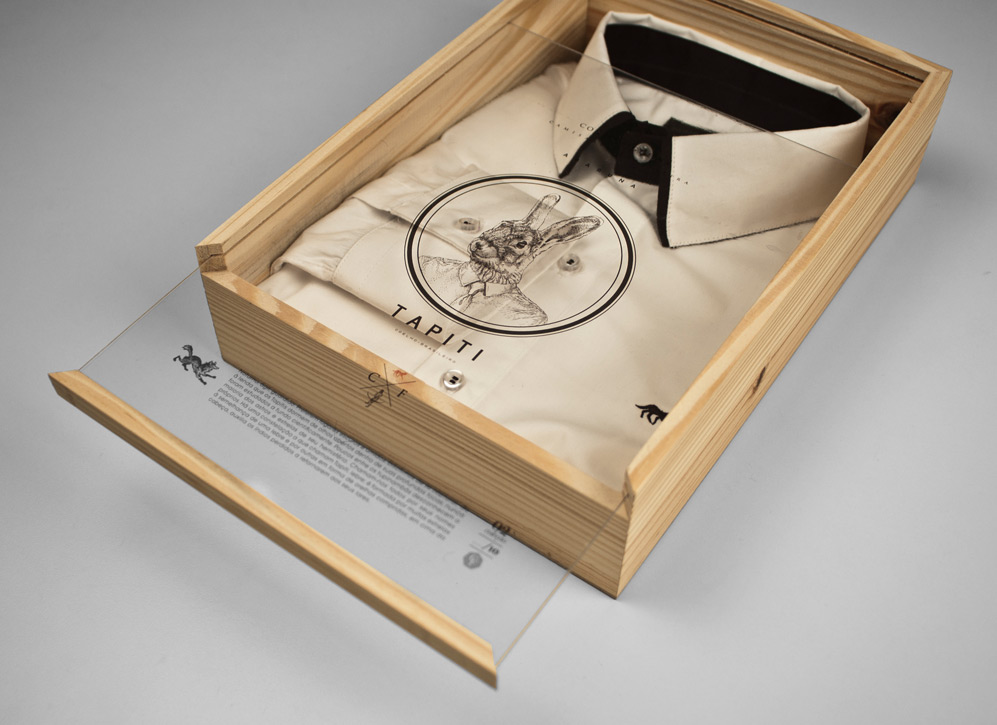|
|
Writing
|
About MeSteve Carell may be known as the nicest man in Hollywood, but his reprise of Gru, the bald-headed villain in Despicable Me 2, is just a warmup for the baddies the actor is about to unleashSteve Carell has, on average, one despicable thought every six months. "Yes," he says, nodding beatifically. "Yes. That's how pure I am." His most recent involved parking.
"There's always that lag time when somebody sits in their car and is like: 'Oh, I know somebody's waiting – I think I'll do my makeup.' Or I  think: 'I'm going to check my phone. Because I own this spot right now.' There's a weird psychology to that. And then they pull out and somebody backs in from across the other way." He clenches his fists, eyeballs bulging at the heavens, white teeth bared. Did he kill them? "I didn't, no. No. I meekly drove away."Carell has a reputation – seeded by colleagues, confirmed by press – as the nicest, most normal man in Hollywood. A man of scruples (he balked at mocking the unwitting on news revue The Daily Show), but not of smugness. Immensely successful (he was paid $15m for Crazy, Stupid, Love) but not raveningly ambitious (he quit The Office when it was still a big fat cash cow).This is not a reputation he seems eager – or able – to debunk today. You can try, of course. He looks as if he's having an evil thought right now, I prod at one point. "No! No! Not at all!" His face pops and crumples. "It's just jetlag. Why would I …? What?" I feel as if I've slapped a puppy.And yet Carell has also just begun a six-month run of promo duties for  movies in which he is, variously, an evil maniac, an absolute tool and a real-life murderer. Sure, the maniac is in a cartoon sequel, but, still, he's got to be channelling something as Gru, bald-headed baddie extraordinaire. He is, he is. "I can relate to the way in which Gru  is willing to go to great lengths to make his children happy and loved and secure and content."Despicable Me 2, the followup to 2010 smash animation, is a Silence of the Lambs-style story (his comparison) of an arch criminal employed for his insights by a federal body. This is the Anti-Villain League, which coaxes Gru from his new life of jam-making and raising the three orphan girls he adopted in the original.That first film, he thinks, spoke to the turmoil in any new parent's life. The sequel pushes it further. "I responded to the character in part because he's at a career impasse. He's trying to do what's right for his children, but at the same time he's losing his own identity. Parents' lives become about their children and they lose part of themselves in the process. It's counterintuitive because when you lose your own passion you are inherently a less productive parent."Carell has two children – Annie, 12, and Johnny, nine – with his wife, Nancy, a former Saturday Night  Live player he met while teaching improvisation at Second City in Chicago. During our conversation, he brings them up every five minutes or so. "I think at the end of my life I'm not going to think: 'Oh, I achieved this, or I did that TV show or that movie.' It will really have to do with how I raised my kids."Their births coincided with Carell's career jumpstart. Off the back of landing that Daily Show job in 1998, he cameoed in Bruce Almighty (2003), shone as lamp-loving weatherman Brick in Anchorman (2004). That same year he was cast in the Ricky Gervais role in the US transfer of The Office. The first series didn't take off, but the network renewed in the hope that Carell's first film lead would fly. The 40-Year-Old  Virgin, which Carell co-wrote with Judd Apatow, took $177m (£116m), changed the face of comedy, and made Carell famous the world over. He then displayed dramatic muscle as a gay suicidal academic in Little Miss Sunshine, and a widower who falls for his brother's girlfriend in Dan in Real Life,  before settling into the mainstream for Get Smart, Date Night, Crazy, Stupid, Love, Horton Hears a Hoo, Dinner for  Schmucks, Seeking a Friend for the End of the World, Hope Springs and The Incredible Burt Wonderstone.Despicable Me 2 is no anomaly; in fact, its love-interest subplot means Carell again plays a man belatedly groping his way round the dating scene, fluffing his lines when he finally gets the courage to call the girl. His back catalogue is full of women chucking him in  cars, of childish pleasures offering refuge from the roughhouse of romance. What can make this odd in live action is that Carell is actually catalogue handsome, almost Jon Hamm, a credible opposite to Juliette Binoche and Julianne Moore, Olivia Wilde and Keira Knightley. The schlub you love is a neat paradox to peddle, yet Carell has made a habit of it. He's the dreamboat dressed as Everyman: flinching at Mark Wahlberg's omnipresent pecs in Date Night; getting tutored by alpha male Ryan Gosling in Crazy, Stupid, Love.Such broad-church appeal relies on an innate niceness, bordering on the blank. His backstory is  PG-rated. The youngest of four brothers born to an electrical  engineer and a psychiatric nurse who are still together, Carell was raised Catholic, played hockey and woodwind at school, studied history at college, nearly became a lawyer but moved to acting after his father asked what he actually enjoyed. He and Nancy own a general store near their house in Massachusetts, purchased to preserve its function as a community hub.On Twitter (two million followers, 71 tweets), Carell scrupulously sticks to the middle of the road; today, too, he's allergic to controversy. "Oh my gosh," he chuckles, good-natured always, asked about the ethics of the Anti Villain League's surveillance programme. "I will make no political correlation between the movie and anything." Likewise, the minions – those jabbering slaves who coo round Gru – remind him most of the Marx brothers. "They're vaguely familial, violent, but also benign. So full of soul and love." He didn't find them frightening en masse? Especially when they're fed a sort of orgiastic poison and revert to hedonistic monsters. "It is a little dark," he concedes. "A little sinister. It doesn't condescend to children. It's not just all puppy dogs and ice-creams and rainbows."It really isn't. In fact, scratch the surface and it seems choka with hidden Dantesque depths and fallen worlds. And so it is possible to see Gru as a warmup for the baddies Carell is about to unleash. He's pitch-perfect insufferable as Toni Collete's new boyfriend in coming-of-age-tale The Way, Way Back. And this winter he'll get an Oscar push for Foxcatcher, the new film from Bennett (Moneyball) Miller, in which he plays John DuPont, the eccentric sports enthusiast and philanthropist who shot an Olympic gold-winning wrestler in 1996, before himself dying in prison in 2010. An early still shows him rake-thin, much aged, deeply creepy. Though he concedes both DuPont and Gru requested their houses be painted black, he's resistant to any connection. "That's a different press junket," micro-niche-finder ever professional.A month ago, Carell went on Ellen DeGeneres's chatshow dressed as Gru: hulking torso, smooth scalp, pelican schnoz. The plan had been for her to try to get him to break character. "But I thought it would be funnier if there wasn't a self-awareness to it. I'm never winking at the audience."And it is this consistency that may be key to Carell's genius. He never, ever cracks – indeed he has said he considers doing so to be impolite. He does not blunder nor break. At the Golden Globes in 2008, the whole room fell apart as host Gervais demanded back his Emmy; all except the man himself, who stayed totally poker. His  Anchorman audition, in which Brick laughs wildly between chokes on an imaginary falafel, shows the converse – so brilliantly realised it's unnerving. And, in the flesh, Carell turns out to be one of the most wholly controlled people you'll meet: so zen and level it can make you feel jittery by comparison.In a New Yorker profile from 2010, Carell compared improvisational comedy to chess: a thousand different gambits, all kept bubbling in the brain. Face to face, such hypersensitivity feels acute. He thinks this kind of  pre-meditation is universal; I think that's less modesty than simple underestimation of his own skills."Everybody does those sort of things to a certain extent. Whether they're cognisant of it or not. I think it's just the human mind. When someone walks in the room you're constantly interpreting what's being said and how it's being said. You're reading someone's face, trying to estimate what lies behind the words. That's just personal intuition. I think everybody naturally  has that. You have escape plans, different scenarios that are worked out or working out in your head as to where you're going to go."What's especially curious about Foxcatcher, then, is that its conclusion is pre-cooked. "You don't know exactly what happened and you just sort of estimate what their reasonings were and what made them up psychologically. So you just do your best with something like that." He smiles, warm and poised. "I don't know. We'll see."He does know. Everybody knows. Carell is the nicest, most normal guy in Hollywood. His playing an actual killer will be absolutely terrifying.• Despicable Me 2 is released in the  UK on 28 June and in the US on 3 JulySteve CarellJudd ApatowCatherine Shoardguardian.co.uk © 2013 Guardian News and Media Limited or its affiliated companies. All rights reserved. | Use of this content is subject to our Terms & Conditions | More Feeds To date, the FDIC has sued officers at only five of the 345 banks that have collapsed since 2008, or about 2 percent of the total.Twenty-six horror directors concoct a death for each letter of the alphabet - but there's not much intentional fun hereKids getting a bit long in the tooth for Alphabetti Spaghetti? Why not stick them in front of this ambitious horror portmanteau? It presents 26 disparate (read: in need  of an editor) slices of dicing from 26 directors you've almost certainly never heard of (and indeed, the one you have – Ben Wheatley – feels tainted by association). Wheatley gets U for Unearthed and doesn't dig up much; other letters include D for Dogfight, F for Fart, H for Hydro-Electric Diffusion, I for  Ingrow and W for WTF. The most intentional fun comes courtesy of N (for Nuptials), which tells the story of a parrot who snitches on a cheating fiancee, and Z for Zetsumetsu, whose massive strap-ons with bayonet extensions and Dr Strangelove nods and vegetable-based horror couldn't, you'd think, get any odder - until you see a cutaway to a pair of breasts tattooed with an image of 9/11.Rating: 2/5HorrorCatherine Shoardguardian.co.uk © 2013 Guardian News and Media Limited or its affiliated companies. All rights reserved. | Use of this content is subject to our Terms & Conditions | More Feeds Sheikh Hamad bin Khalifa al-Thani’s decision raises questions about whether his son will continue the country’s high-profile interventionist policy. Monaco plan to take legal action against a French football league edict that they must move their headquarters to France, ending tax exemption for the club's players.  The car-sized Mars rover Curiosity, which landed on the Red Planet last month, is the biggest, most expensive and most ambitious planetary mission in many years. But it is just one of a sweeping portfolio of past and future missions of pioneering planetary exploration managed by NASA’s Jet Propulsion Laboratory (JPL) in Pasadena, Calif., as JPL director Charles Elachi described in a talk at MIT on Monday.“Mars is only about 15 percent of what we do,†Elachi said, although it’s the project that has been garnering the lion’s share of attention this year — including a congratulatory phone call from President Barack Obama after the successful conclusion of Curiosity’s “seven minutes of terror†landing sequence. That landing used several innovative technologies, including a “sky crane†that gently lowered the  rover to the Martian surface — all of which had to work perfectly for the landing to succeed.Curiosity’s 350-million-mile trek from Earth to Mars, and its need to land within a designated two-mile-wide area, was comparable to hitting a golf ball in Cambridge and having it land on a specific seat in Pasadena’s Rose Bowl Stadium, Elachi said — and doing so while the stadium was moving rapidly.The team that accomplished this feat and monitored its progress from JPL’s mission control center included at least six MIT alumni, Elachi said — including the instant celebrity known as “Mohawk Guy,†Bobak Ferdowsi SM ’03. (Ferdowsi now shaves different patterns on the sides of his head each week in response to public requests, Elachi said, showing a photo of one pattern he had adopted, which spelled out “JPL†in Morse code).Elachi hopes that many more MIT graduates will end up working at JPL. “We need talent, from materials scientists to biologists  to electrical engineers,†he said.The latest images beamed back by Curiosity, like the many images of Mars from earlier landers and rovers, reveal a surprisingly Earth-like landscape, Elachi said. In fact, in classes he teaches at Caltech — a sidebar to his duties as director of JPL — he often shows students side-by-side images from Mars and Death Valley. The pictures appear so similar, he says, that he sometimes forgets the correct identification himself.“Could life have developed on Mars?†Elachi asked. It seems  entirely possible, he said: “We believe that there were oceans†on the Red Planet in the distant past — the kind of environment where life is believed to  have originated on Earth. Even today, images from orbit have given indications of a subsurface layer of flowing water that sometimes spills out on crater and valley walls. Perhaps signs of  life will be found there, Elachi said, if and when our robotic emissaries are able to drill down into the Martian subsurface.Elachi says that beyond Curiosity’s mission, which is expected to continue for at least six years, further missions will be sent to Mars in 2016, and possibly in 2018 as well.  Eventually, researchers hope to send a mission capable  of returning samples from Mars for more detailed analysis on Earth, he said — after fat burning furnace download including a layover at the International Space Station to guard against dangerous contaminants.Mars missions, as exciting as they are, represent only a small part of JPL’s work, Elachi said. The ongoing Cassini mission exploring Saturn and its moons; the upcoming Juno mission to Jupiter; the Dawn mission exploring the solar system’s largest asteroids; and continuing communication with far-off Voyager 2, in the outer fringes of the solar system, are among the many other missions managed by the lab.Running such a far-flung armada of planetary exploration craft is far from anything Elachi ever imagined growing up in a small village in Lebanon, he said. But he has now spent more than 40 years at JPL, he said, and “it’s really the most exciting thing. I get paid for doing exploration.â€The white-knuckle landing of Curiosity on Aug. 5 — where, Elachi said, “if any one thing doesn’t go right, it’s game over†— was watched live by an estimated 50 million people, despite taking place at 1:30 a.m. Eastern time. “We put our footprint on that planet with our rovers,†he said. Knowing that our robotic emissaries are exploring Mars’ nooks and crannies, he said, the Red Planet “looks different now.†It’s no longer just a pinpoint of distant light, it’s a very real outpost of human exploration. BP said Tuesday that it will restart its suspended dividend payments, put its troubled Texas City refinery up for sale and sell another $13 billion in assets, a move aimed at covering costs flowing from last year's the massive oil spill in the Gulf of Mexico. An executive who helped turn the History Channel into a cable industry leader. Derek Jeter stepped into the batter's box at Yankee Stadium for the first time in nine months, and the crowd rose as one and cheered. The final numbers are in showing that PC makers shipped fewer machines last year than in 2011, and Windows 8 is among several factors being blamed by IDC for the decline, which is expected to continue this year. A selective guide to spoken word events, walking tours and other cultural activities in New York. A late-winter storm made its way Wednesday to the nation’s capital, where residents braced for the possibility of power outages. It was likely the first time Senegalese sabar drums, a cello, a didgeridoo, an accordion, a piano and panpipes made from test tubes all occupied one stage together. From Balinese gamelan to original glass instruments, the CAST (Center for Art, Science & Technology)  Marathon concert presented five full hours of genre-bending new music on April 5 in MIT's Kresge Auditorium. A follow-up to 2011's FAST Forward Marathon concert, the concert celebrated the convergence of art and technology — from simple percussive acts to the most sophisticated gestural controls — and showcased the many creative tools and techniques used by artists from MIT and beyond. Evan Ziporyn, Kenan Sahin Distinguished Professor of Music, curated the concert in the spirit of aesthetic adventurousness. The marathon brought together the vast and diverse musical talent that has always existed at MIT, further galvanized by the expertise of visiting artists from a variety of styles and traditions. During FAST, Ziporyn says, "We learned just how many artists and how much artistic activity there already was at MIT; the energy and ideas that are produced when you simply nudge these people a bit closer together, particularly when you stir the pot with a few outside guests, is amazing." Opening the show was MIT's own Gamelan Galak Tika led by Guest Creative Director Dewa Alit, a gamelan master. Featured also were special guests Hauschka and Pamela Z, two artists at the forefront of contemporary experimental music. Employing custom MIDI controllers, Pamela Z used her classically trained voice, found text  and objects, digital delay loops, and gestural controls to create layered and incantatory sound collages. With such experimental  music, she says, "you can combine bel canto techniques with screeching. You don't have to pick one." Such creative suffusion was the order of the day. Hauschka also employed found objects in his extensions of John Cage's "prepared piano." By inserting everything from ping-pong balls to bottle caps into the "guts" of the piano, Hauschka created distinctly un-piano like sounds, in an effort to replicate acoustically the sounds of electronica. At the concert, his piece "Radar" ingeniously reproduced the pulsing techno sounds of a dance club. The concert culminated in an  unheard-of world fusion version of Terry Riley's minimalist masterpiece "In C." In  the piece, renowned guest artists performed with members from six different MIT musical groups: The MIT Symphony Orchestra, MIT Wind Ensemble, Festival Jazz Ensemble, Rambax, Galak Tika and the new Glass Lab Band, whose original glass instruments were developed under the leadership of Glass Lab Director Peter Houk and Visiting Artist Mark Stewart. Perhaps no better a piece than "In C" to accommodate this multifarious cross section of musical practices. Heralded as the first of its kind when it debuted in 1964, the minimalist"In C" is composed of 53 short musical phrases which musicians are urged to play through at their own pace, creating ever-shifting layers of canons  and polyrhythms. Holding the piece together is the metronomic C note called "The Pulse." Much of "In C" is left to chance; there is no fixed length or number of performers. At the concert, its loose, overlapping texture was both rousing and hypnotic at once,  rising and falling over time. The idiosyncrasies of each particular instrument emerged the longer one listened, and then dissolved back into the river of sound. "Experimental glass instruments jamming together classical cellos and traditional Senegalese drums, making something beautiful, groovy and unprecedented to me this is a portrait of the arts at MIT," Ziporyn says. As part of ICANN's efforts to become a  more global  organization it detailed plans on Thursday for its new office in Istanbul. The MIT Forum for Supply Chain Innovation announced today that Flextronics (NASDAQ: FLEX), one of the world’s largest manufacturing and end-to-end supply chain solutions companies, has become a strategic sponsor of the Forum. “Flextronics is very pleased to become a strategic sponsor of the Forum and we look forward to bringing our industry insight and expertise to the Board, including solutions to help transform the U.S. manufacturing industry,†says David Mark SBEE ’81, SB ’82, chief strategy officer of Flextronics who has joined the Forum’s Manufacturing Technology Advisory Board.MIT Professor David Simchi-Levi, founder of the Forum, says, “Flextronics brings incredible industry perspective and expertise to the board and we thank Flextronics for their support and welcome David Mark, an MIT Alum, to the Forum and the Board.â€The Forum also announced that Mark will speak at the Forum’s March 28 conference, “Global Supply Chain Strategy: Outsourcing, Re-shoring  and Near-Shoring,†at the MIT Faculty Club.The MIT Forum for Supply Chain Innovation is a community composed of academics and industry members whose support allows forum researchers to provide customer-focused solutions to design and manage the new supply chain. The Forum has pioneered a deeper understanding of the supply chain and its relationship to corporate strategy and has broad support from a wide cross-section of industry.For more information, please google sniper Chief Strategy OfficerEmail: [email protected]: 617-500-5274 The Atlantic Coast Conference presidents have agreed for the league to retain media rights for a university that leaves the conference. Bacteria swim by rotating the helical, hairlike flagella that extend from their unicellular bodies. Some bacteria, including the Escherichia coli (E. coli) living in the human gut, have multiple flagella that rotate as a bundle to move the cell forward. These cells turn somewhat acrobatically by unbundling their flagella, causing the cell to tumble, reorient and  strike out in another direction.But many microbes, including 90 percent of motile marine bacteria,  have only a single rigid flagellum; they are able to swim both forward and backward by rotating this flagellum either counterclockwise or clockwise. These microbes change direction with a sideways “flick† of their lone flagellum — a flick first documented in 2011 as a unique swimming stroke whose mechanism has remained a mystery. Now, using high-speed video to record individual swimming bacteria at up to 1,000 frames per second, researchers at MIT have seen that the flick occurs when the so-called “hook,†a small flexible rod connecting the flagellum to the cell’s internal motor, buckles during forward swims. The drag on the cell head caused by the water’s resistance combines with the opposing thrust force from the rotating flagellum to compress the hook, causing it to buckle and flick the cell into a 90-degree reorientation, the researchers say in a paper published online July 7 in Nature Physics. The ability to reorient by flicking ultimately helps bacteria make their way toward food in the nutrient-sparse ocean. This might seem like an awkward means of navigation. But when you consider that marine bacteria can swim at nearly 100 body lengths per second — the equivalent of a car traveling 900 mph, faster than the speed of sound — and the flagellum spins at more than 1,000 revolutions per second, the 10-millisecond buckling of the hook seems a little more spectacular. The mechanism is of particular interest to engineers, who traditionally focus on the prevention of buckling to avoid failure in structures. ‘Controlled failure’“The bacteria have evolved to exploit this structural failure as a strategy,†says lead author Roman Stocker, an associate professor in MIT’s Department of Civil and Environmental Engineering, whose research focuses on the ecology and biophysics of ocean microbes. “E. coli and other multiflagellated microbes have to synthesize and maintain all those flagella. But marine bacteria are able to achieve the same functionality with just one flagellum by turning physics on its head. It’s controlled failure.†Stocker’s co-authors on the paper are graduate student Kwangmin Son and postdoc Jeffrey Guasto. Their research was funded by the National Science Foundation.Understanding how marine microbes use controlled failure to change swimming direction is useful in its own right: Despite their small size, marine microorganisms are at the base of the ocean food chain, and can cause red tides, decimate coral reefs or clean up oil spills. But this work also may have future applications in soft robotics or bioengineered systems for drug delivery. “A single actuator, the flagellum, enables both propulsion and turning in these bacteria,†Guasto says. “This is a well-known principle in robotics called ‘underactuation,’ but it is rarely considered at the micrometer scale.â€Stocker attributes the insight that buckling is the mechanism responsible for the flick to the “engineering bias†stemming from the team’s knowledge of mechanics: “When our high-speed imaging showed that flicks only occurred during forward motion, we intuited that this implied compression, and thus the potential for buckling.†But the  key to discovering the mechanism was in the high spatial and temporal resolution of the imaging technology, he says. Bacterial three-point turnThe researchers studied the swimming patterns of the bacterium Vibrio alginolyticus by tracking individual cells and saw that the microbe executes a sort of three-point turn consisting of a backward swim, a brief forward swim lasting only 10 milliseconds, and then  the 90-degree flick to a new direction caused by the buckling of the hook. After the flick, when the bacteria swim at a steady speed, the hook twists up and becomes stiffer, and flicking does not occur. To test their hypothesis that compression was responsible for the flicking process, Son and Guasto altered  the concentration of sodium ions in the water. Because a sodium ion pump drives the cell’s motor, decreasing the salt content slows the microbes, and thus decreases compressive forces on the hook, preventing the flick. Altogether they studied the trajectories of more than 17,000 bacteria, including a coral pathogen and a mixed community of microbes from the Atlantic Ocean. All displayed the same swimming pattern, leading to the conclusion that this remarkable maneuver is a common means of reorientation for marine microbes. “At first blush, one might think that a single polar flagellum is a more economical design  than multiple … flagella, especially since flagellar bundles are not very efficient,†Howard Berg, the Herchel Smith Professor of Physics and professor of  molecular and cellular biology at Harvard University, writes in an analysis published in the same issue of Nature Physics. “But most of the costs in this business are in the construction, not in the operation. Presumably, it’s cheaper to place motors at random positions along the cell wall than it is  to mount them on a specific platform at one pole. One benefit of the polar design might  be enhanced swimming speeds; one cost a more constrained search paradigm. Nature appears to have stumbled upon a solution to the latter problem: a flick triggered by a buckling instability.â€â€œThe buckling of the hook of these bacteria is one of the smallest examples in nature of structural failure turned into biological function, and it is a pervasive strategy in the ocean,†says Son, who is the paper’s first author. “Above all, we have remained astonished throughout  this project at the resourcefulness of these smallest of all organisms,†Stocker adds. A Mexican woman known as the "Queen of the Pacific" has pleaded guilty in a U.S. federal court in Miami to a drug  trafficking charge and admitted she provided money to a former Colombian drug lord to help him avoid arrest. Efforts by  major media companies to attract advertising dollars, once reserved for the spring, are already in full swing, with three held in Midtown Manhattan on Tuesday alone. Michael Seidman, director of the Center for Integrative Medicine at the Henry Ford Health System in Detroit, hates the taste of green tea. But that doesn't stop him from drinking a cup five days a week. When he's done, Seidman squeezes the liquid out of the tea leaves and then -- get this -- eats them. Setbacks for rebels reveal the degree to which the disorganized and ill-equipped force is depending on allied airstrikes to end Gaddafi's rule. In Daniel Pearle’s debut play with LCT3, young Jake — never shown onstage — has an affinity for dressing like the Little Mermaid, among others female heroines. It’s a question that arises with virtually every major new finding in science or medicine: What makes a result reliable enough to be taken seriously? The answer has to do with statistical significance — but also with judgments about what standards make sense in forex growth bot download situation.The unit of measurement usually given when talking about statistical significance is the standard deviation, expressed with the lowercase Greek letter sigma (σ). The term refers to the amount of variability in a given set of data: whether the data points are all clustered together, or very spread out.In many situations, the results of an experiment follow what is called a “normal distribution.†For example, if you flip a coin 100 times and count how many times it comes up heads, the average result will be 50. But if you do this test 100 times, most of the results will be close to 50, but not exactly. You’ll get almost as many cases with 49, or 51. You’ll get quite a few 45s or 55s, but almost no 20s or 80s. If you plot your 100 tests on a graph, you’ll get a well-known shape called a bell curve that’s highest in the middle and tapers off on either side. That is  a normal distribution.The  deviation is how far a given data point is from the average. In the coin example, a result of 47 has a deviation of three from the  average (or “meanâ€) value of 50. The standard deviation is just the square root of the average of all the squared deviations. One standard deviation, or one sigma, plotted above or below the average value on that normal distribution curve, would  define a region that includes 68 percent of all the data points. Two sigmas above or below would include about 95 percent of the data, and three sigmas would include 99.7 percent.So, when is a particular data point — or research result — considered significant? The standard deviation can provide a yardstick: If a data point is a few standard deviations away from the model being tested, this is strong evidence that the data point is not consistent with that model. However, how to use this yardstick depends on the situation. John Tsitsiklis, the Clarence J. Lebel Professor of Electrical Engineering at MIT, who teaches the course Fundamentals of Probability, says, “Statistics is an art, with a lot of room for creativity and mistakes.†Part of the art comes down to deciding what measures  make sense for a given setting.For example, if you’re taking a poll on how people plan to vote in an election, the accepted convention is that two standard deviations above or below the average, which gives a 95 percent confidence level, is reasonable. That two-sigma interval is what pollsters mean when they state the “margin of sampling error,†such as 3 percent, in their findings. That means if you asked an entire population a survey question and got a certain answer, and then asked the same question to a random group of 1,000 people, there is a 95 percent chance that the second group’s results would fall within two-sigma from the first result. If a poll found that 55 percent of the entire population favors candidate A, then 95 percent of the time, a second poll’s result would be somewhere between 52 and 58 percent.Of course, that also means that 5 percent of the time, the result would be outside the two-sigma range. That much uncertainty is fine for an opinion poll, but maybe not for the result of a crucial experiment challenging scientists’ understanding of an important phenomenon — such as last fall’s announcement of a possible detection of neutrinos moving faster than the speed of light in an experiment at the European Center for Nuclear Research, known as CERN.Six sigmas can still be wrongTechnically, the results of that experiment had a very high level of confidence: six sigma. In most cases, a five-sigma result is considered the gold standard for significance, corresponding to about a one-in-a-million chance that the findings are just a result of random variations; six sigma translates to one chance in a half-billion that the result is a random fluke.  (A popular business-management strategy called “Six Sigma†derives from this term, and is based on instituting rigorous quality-control procedures to reduce waste.)But in that CERN experiment, which had the potential to overturn a century’s worth of accepted physics that has been confirmed in thousands of different kinds of tests, that’s still not nearly good enough. For one  thing, it assumes that the researchers have done the analysis correctly and haven’t overlooked some systematic source of error. And because the result was so unexpected and so revolutionary, that’s exactly what most physicists think happened — some undetected source of error.Interestingly, a different set of results from the same CERN particle accelerator were interpreted quite differently. A possible detection of something called a Higgs boson — a theorized subatomic particle that would help to explain why particles weigh something rather  than nothing — was also announced last year. That result had only a 2.3sigma confidence level, corresponding to about one chance in 50 that the result was a random error (98 percent confidence level). Yet because it fits what is expected based on current physics,  most physicists think the result is likely to be correct, despite its much lower statistical  confidence level.Significant but spuriousBut it gets more complicated in other areas. “Where this business gets really tricky is in social science and medical science,†Tsitsiklis says. For example, a widely cited 2005 paper in the journal Public Library of Science — titled “Why most published research findings are wrong†— gave a detailed analysis of a variety of factors that could lead to unjustified conclusions. However, these are not accounted for in the typical statistical measures used, including “statistical significance.â€The paper points out  that by looking at large datasets in enough different ways, it is easy to find examples that pass the usual criteria for statistical significance, even though they are really just random variations. Remember the example about a poll, where one time out of 20 a result will just randomly fall outside those “significance†boundaries?  Well, even with a five-sigma significance level, if a computer scours through millions of possibilities, then some totally random patterns will be discovered that meet those criteria. When that happens, “you don’t publish the ones that don’t pass†the significance test, Tsitsiklis says, but some random correlations will give the appearance of being real findings — “so you end up just publishing the flukes.â€One example of that: Many published papers in  the last decade have claimed  significant correlations between certain kinds of behaviors or thought processes and brain images captured by magnetic resonance imaging, or MRI. But sometimes these tests can find apparent correlations that are just the results of natural fluctuations, or “noise,†in  the system.  One researcher in 2009 duplicated one such experiment, on the recognition of facial expressions, only instead of human subjects he scanned a dead fish — and found “significant†results. “If you look in enough places, you can get a ‘dead fish’ result,†Tsitsiklis says. Conversely, in many cases a result with low statistical significance can nevertheless “tell you something is worth investigating,†he says.So bear in mind, just because something meets an accepted definition of “significance,†that doesn’t necessarily make it significant. It all depends on the context. Cuteness aside, the  smaller versions eat less and are easier to |



 Offline
Offline RSS Feed
RSS Feed Send Message
Send Message Add to Friends
Add to Friends Block Writer
Block Writer Flag Writer
Flag Writer